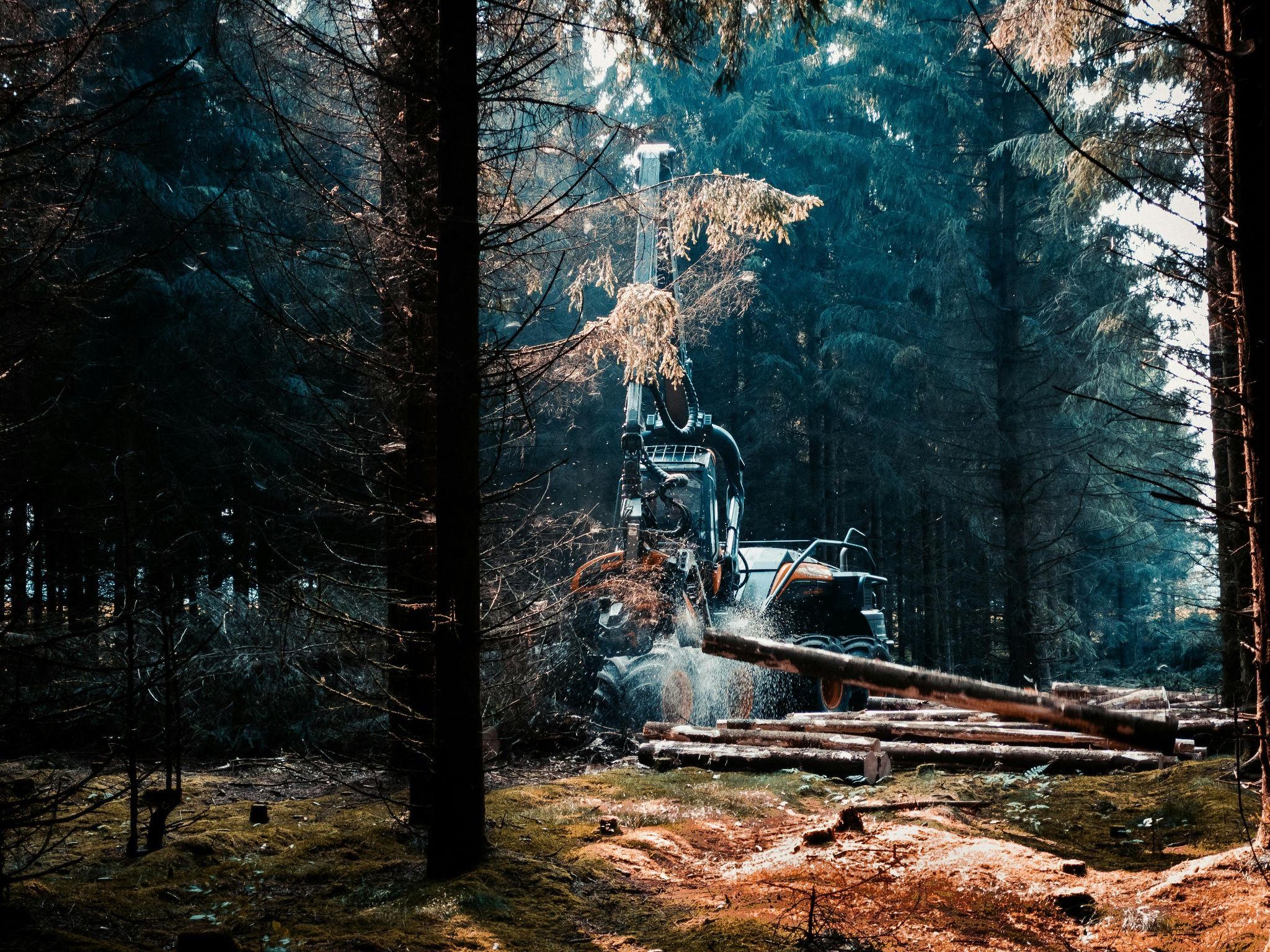Forestry mulching is an efficient and eco-friendly land-clearing method, which involves using a single machine to cut, grind, and clear vegetation. This process offers numerous benefits, making it a preferred choice for landowners, developers, and environmentalists alike. This article explores the key advantages of forestry mulching services for land clearing.
1. Environmental Benefits
a. Soil Health Preservation
Forestry mulching preserves soil health by minimizing soil disturbance. Traditional land clearing methods, such as bulldozing and burning, often lead to soil erosion and degradation. Mulching leaves the soil structure intact and spreads organic material across the ground, which decomposes and enriches the soil with nutrients.
b. Reduced Erosion
By maintaining ground cover, forestry mulching significantly reduces the risk of erosion. The mulched material acts as a protective layer, shielding the soil from the elements and preventing the loss of topsoil. This is particularly beneficial on slopes and in areas prone to heavy rainfall.
c. Habitat Protection
Forestry mulching helps protect habitats by selectively clearing vegetation. This precision allows for the removal of invasive species while preserving native plants and wildlife habitats. This method supports biodiversity and contributes to a healthier ecosystem.
2. Cost-Effectiveness
a. Lower Labor Costs
Forestry mulching requires fewer workers compared to traditional land-clearing methods. A single machine operated by one person can efficiently clear large areas, reducing labor costs and increasing productivity.
b. Equipment Efficiency
The machinery used in forestry mulching combines several functions, such as cutting, grinding, and clearing, into one process. This eliminates the need for multiple pieces of equipment, reducing fuel consumption and maintenance costs.
c. Time Savings
Forestry mulching is faster than traditional methods. The ability to cut, grind, and clear vegetation in one pass saves time and allows landowners to proceed with their projects more quickly. This is particularly advantageous for time-sensitive developments.
3. Versatility and Accessibility
a. Diverse Applications
Forestry mulching is suitable for a wide range of applications, including residential land clearing, commercial development, utility line maintenance, and habitat restoration. Its versatility makes it an ideal choice for various land management needs.
b. Access to Difficult Terrain
Forestry mulching machines are designed to operate in challenging terrains, such as dense forests, rocky areas, and steep slopes. This accessibility allows for land clearing in areas that might be difficult or impossible to reach with traditional methods.
c. Selective Clearing
The precision of forestry mulching allows for selective clearing, enabling landowners to remove specific vegetation while preserving desirable trees and plants. This selective approach is beneficial for creating firebreaks, trails, and maintaining aesthetic appeal.
4. Safety and Reduced Risk
a. Fire Hazard Reduction
Mulching reduces the risk of wildfires by eliminating dead and dry vegetation that can act as fuel. The mulched material decomposes slowly and is less likely to ignite, contributing to safer landscapes.
b. Improved Site Visibility
Forestry mulching clears dense underbrush and small trees, improving visibility and access to the land. This is crucial for construction projects, recreational areas, and wildlife management, enhancing safety for workers and visitors.
c. Controlled Debris Management
Traditional land clearing methods often result in large piles of debris that can pose safety hazards and require additional disposal efforts. Forestry mulching, however, grinds the vegetation into small, manageable pieces that decompose naturally, reducing the need for debris removal.
5. Long-Term Land Management
a. Natural Mulch Layer
The mulched material left on the ground acts as a natural mulch layer, suppressing weed growth and retaining soil moisture. This reduces the need for chemical herbicides and irrigation, promoting sustainable land management practices.
b. Enhanced Soil Fertility
As the mulched material decomposes, it adds organic matter to the soil, enhancing its fertility and promoting healthy plant growth. This long-term benefit supports sustainable agriculture, reforestation, and habitat restoration projects.
c. Minimal Regrowth
Forestry mulching effectively removes the root systems of unwanted vegetation, reducing the likelihood of regrowth. This results in longer-lasting land clearing, minimizing the need for frequent maintenance and additional clearing efforts.
6. Aesthetic and Recreational Benefits
a. Improved Landscape Appearance
Forestry mulching enhances the visual appeal of the land by creating a clean, well-maintained appearance. This is particularly beneficial for residential properties, parks, and recreational areas where aesthetics are important.
b. Trail and Park Creation
The precision of forestry mulching allows for the creation of trails, paths, and recreational areas. By selectively clearing underbrush and small trees, landowners can design functional and attractive spaces for hiking, biking, and other outdoor activities.
c. Increased Property Value
Well-maintained and aesthetically pleasing land can increase property value. Forestry mulching not only improves the appearance of the land but also enhances its usability, making it more attractive to potential buyers and investors.
7. Sustainable and Eco-Friendly Practices
a. Carbon Sequestration
Forestry mulching contributes to carbon sequestration by converting vegetation into organic matter that decomposes slowly. This process captures carbon dioxide from the atmosphere and stores it in the soil, mitigating the effects of climate change.
b. Reduced Chemical Use
The natural mulch layer created by forestry mulching suppresses weed growth, reducing the need for chemical herbicides. This promotes healthier soil and water quality, benefiting the environment and supporting sustainable land management practices.
c. Renewable Resource Utilization
Forestry mulching makes use of renewable resources by converting vegetation into mulch. This sustainable practice contrasts with traditional methods that often involve burning or disposing of cleared vegetation, which can have negative environmental impacts.
8. Wildlife and Habitat Conservation
a. Preservation of Native Species
By selectively clearing invasive species and underbrush, forestry mulching helps preserve native plants and wildlife habitats. This promotes biodiversity and supports healthy ecosystems.
b. Creation of Edge Habitats
Forestry mulching can create edge habitats, which are transitional zones between different ecosystems. These areas often support a higher diversity of plant and animal species, enhancing overall biodiversity and ecological health.
c. Enhanced Wildlife Corridors
Selective clearing through forestry mulching can enhance wildlife corridors by maintaining vegetation cover and connectivity. These corridors are essential for the movement and migration of wildlife, supporting their survival and well-being.
9. Practical Applications
a. Agriculture and Pasture Management
Forestry mulching is beneficial for agricultural land and pasture management. It clears brush and unwanted vegetation, allowing for more efficient use of land for crops and grazing. The mulched material enriches the soil, promoting healthier plant growth.
b. Firebreak Creation
Creating firebreaks is crucial for wildfire prevention and management. Forestry mulching provides an effective way to clear vegetation and create firebreaks, reducing the risk of wildfires spreading.
c. Land Development and Construction
For land development and construction projects, forestry mulching offers a quick and efficient way to clear land. The process prepares the land for construction while preserving soil health and minimizing environmental impact.
10. Case Studies and Success Stories
a. Residential Land Clearing
Homeowners looking to clear their land for new construction or landscaping can benefit from forestry mulching. Case studies show that this method is faster, more cost-effective, and environmentally friendly compared to traditional clearing methods.
b. Utility Line Maintenance
Utility companies use forestry mulching to maintain clearances for power lines and pipelines. The precision and efficiency of mulching ensure that vegetation is managed without damaging infrastructure or the environment.
c. Wildlife Habitat Restoration
Environmental organizations use forestry mulching to restore wildlife habitats. By selectively clearing invasive species and underbrush, they create healthier ecosystems that support diverse plant and animal life.
Conclusion
Forestry mulching offers a myriad of benefits for land clearing, making it an ideal choice for various applications. Its environmental advantages, cost-effectiveness, versatility, safety, and long-term benefits underscore its value as a sustainable land management practice. Whether for residential, commercial, or environmental purposes, forestry mulching stands out as a superior method for efficient and eco-friendly land clearing.



